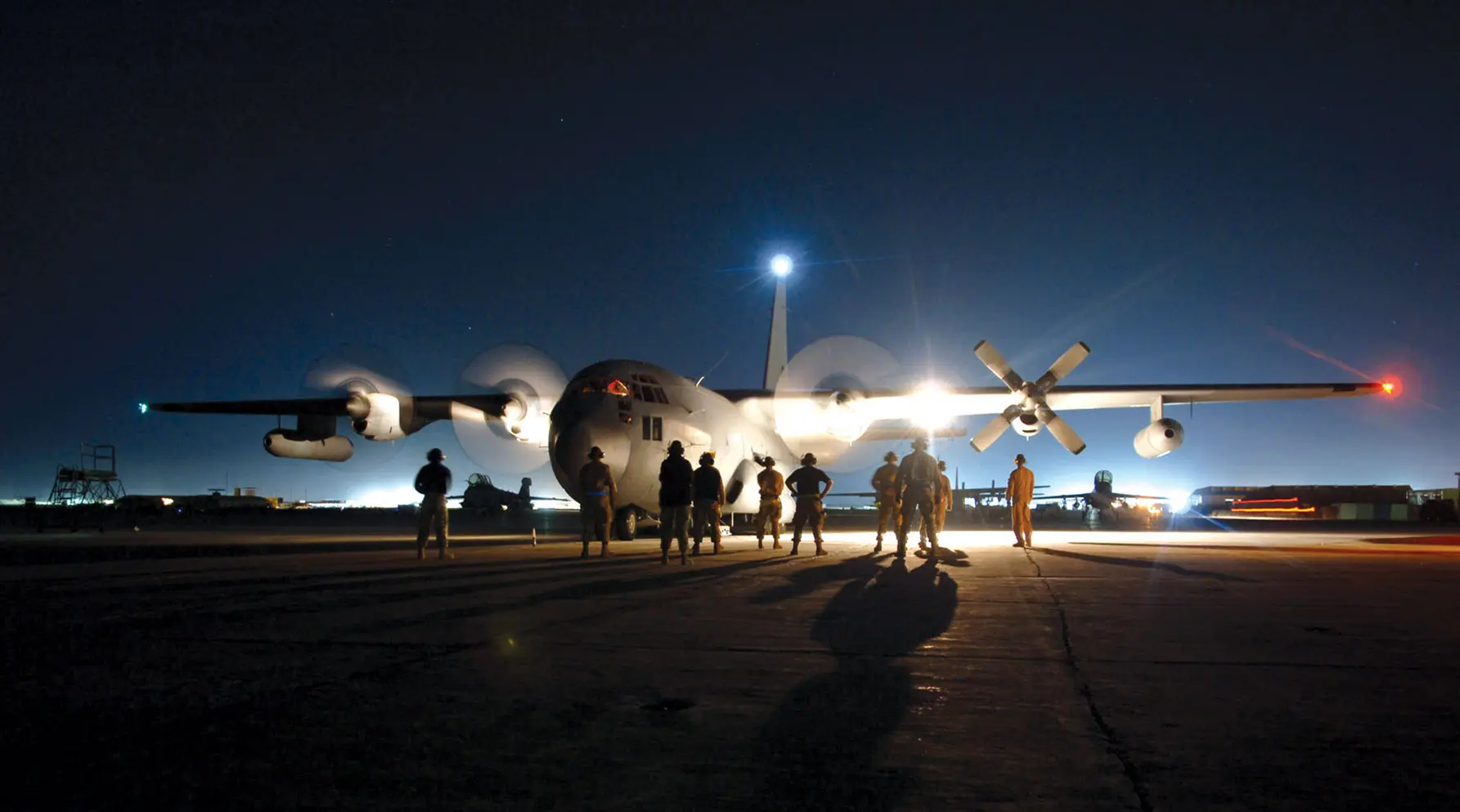“Don’t Cross the Streams!” Electronic Warfare and How It Affects Air Force Mobility
By Ms. Dara Marlar, Staff Writer
Like proton streams in the iconic 1980s film Ghostbusters, electronic warfare (EW) and the electromagnetic spectrum (EMS) seem like elusive concepts. The main difference is that although crossing the streams “would be bad,” not understanding how to use and counter EW could be the difference between going home victorious or the victory going to the adversary.
EW is one of the few types of warfare that affects all military domains, which include land, air, sea, space, and cyberspace.
EMS is a range of frequencies for electromagnetic energy, including radio waves, microwaves, millimeter waves, infrared, visible light, ultraviolet light, x-rays, and gamma rays. Sounds crazy, right? Well, as crazy as it sounds, EW senses, communicates, protects, disrupts, denies, or degrades an adversary’s or your own signal use.
Numerous ways exist to address electronic warfare threats. Still, the most readily available methods and tactics include integrating specialized electronic warfare systems into aircraft, relying on dedicated electronic warfare support from other units, and employing agile combat employment to maneuver and reduce exposure in contested environments. These tactics include training crews to identify and mitigate enemy electronic threats while maintaining mission effectiveness in hostile airspace.
Key points about Air Mobility Command (AMC) and electronic warfare encompass:
Dedicated EW Aircraft Support. AMC primarily relies on dedicated electronic warfare aircraft like the EC-130 Compass Call to provide active electronic attack capabilities against enemy radars and communications, creating a protective umbrella for AMC aircraft during operations.
Onboard EW Systems. AMC aircraft like C-17s and C-130s are equipped with basic electronic warfare systems, including radar warning receivers and electronic countermeasures, to detect and counter threats.
Tactics and Training. AMC emphasizes training crews to understand and react to electronic threats, including employing evasive maneuvers, altering flight paths, and using electronic countermeasures when necessary.
Agile Combat Employment (ACE). AMC leverages ACE tactics to rapidly move aircraft between dispersed locations, making it harder for adversaries to target and track them in contested environments.
Coordination with Other Forces. AMC closely coordinates with dedicated electronic warfare units in combat scenarios to gain situational awareness and suppress enemy electronic capabilities.

